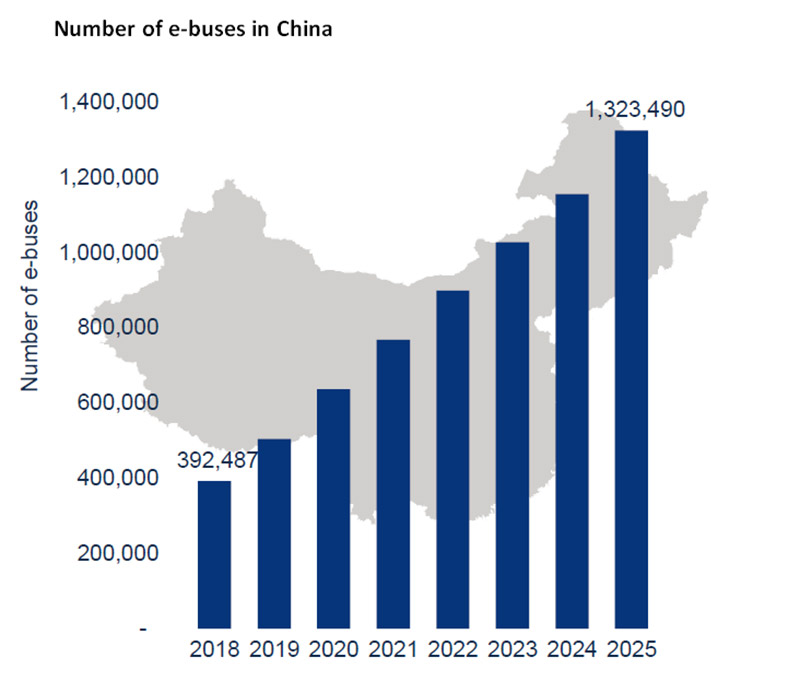China will have 1 million electric buses on the road by 2023

Pic: Getty
Global electric bus uptake is set to triple by 2023, driven by public policy and declining battery costs, according to new research by Wood Mackenzie.
And let’s be clear – these buses need big batteries.
Urban buses operating on a closed route can use batteries of around 300kWh, but they only get bigger from there – especially if these buses are going long distances and pulling big payloads.
As a comparison, the new VW ID.3 has a 58 kWh-battery pack.
“Electric bus purchases are expected to increase along with further market growth and continuing government support, reaching 40 per cent of new bus purchases globally in 2040,” Wood Mackenzie analyst Timotej Gavrilovic says.
China, which accounted for 98 per cent of the global e-bus market in 2018, will remain the frontrunner — with 1 million e-buses on the road by 2023 and 1.3 million by 2025.

In a distant second, the US and Europe will account for a combined 40,000 electric heavy-duty vehicles by 2025.
In these markets, most transit and school bus operators are still wary of e-buses as a new technology and will continue testing the equipment prior to investing in scaling current deployments, Gavrilovic says.
“However, government and transit agencies have clean transportation targets that should accelerate growth beyond 2025.
“European e-bus growth is driven by urban bus deployments, while the US market is driven by transit and school e-buses.”
NOW READ: In 2023, there’s only enough battery grade lithium for VW and Tesla
UNLOCK INSIGHTS
Discover the untold stories of emerging ASX stocks.
Daily news and expert analysis, it's free to subscribe.
By proceeding, you confirm you understand that we handle personal information in accordance with our Privacy Policy.








